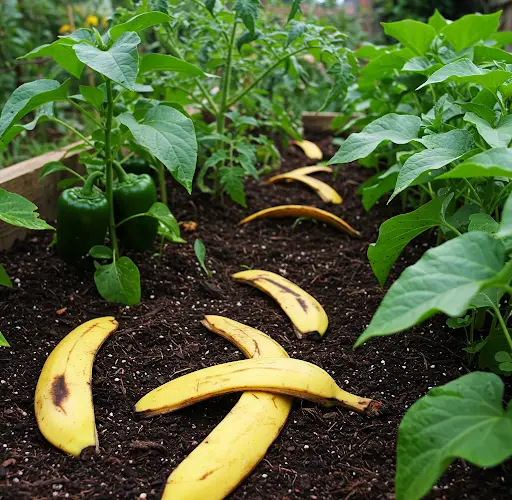How to Use Banana Peels to Create a Powerful Fertilizer for Tomatoes, Peppers, and Cucumbers
Healthy, thriving vegetable plants start with nutrient-rich soil. Whether you’re growing tomatoes, peppers, cucumbers, or other popular garden vegetables, giving your plants the right nutrients at the right time is key to getting vibrant growth and a bountiful harvest. While compost and manure are excellent additions to garden soil, you don’t always need fancy ingredients to feed your plants. In fact, you might already have a powerful plant supplement sitting in your kitchen—banana peels.
Banana peels are a hidden treasure when it comes to organic gardening. They’re rich in essential nutrients like potassium, nitrogen, phosphorus, and even magnesium—all of which are vital for plant health and development. Instead of tossing them in the trash, you can easily turn them into a homemade liquid fertilizer that benefits your garden in a variety of ways.
Why Banana Peels Are Great for Your Plants
Each stage of a plant’s life cycle requires specific nutrients:
-
Nitrogen encourages lush green leaves and vigorous vegetative growth.
-
Phosphorus supports strong root development and plays a key role in flower and fruit production.
-
Potassium helps regulate water uptake, improves drought resistance, and boosts the quality and quantity of fruits.
-
Magnesium is critical for photosynthesis, as it helps plants absorb sunlight more effectively.
Banana peels naturally contain all of these nutrients, making them an ideal natural fertilizer, especially for fruiting crops like tomatoes, peppers, and cucumbers that demand high levels of potassium and other micronutrients.
How to Make Banana Peel Fertilizer
Creating this banana peel fertilizer is quick and easy. Here’s how to do it:
What You’ll Need:
-
Banana peels (2–4 peels per batch)
-
A 5-gallon bucket or large container
-
Warm water
-
A knife or scissors
-
A strainer or cheesecloth
Step 1: Prepare the Peels
Start by collecting banana peels from your kitchen. If possible, use organic bananas to avoid introducing any pesticide residues into your garden. If you’re using conventional bananas, be sure to wash the peels thoroughly before using them.
Next, chop the peels into small pieces. This increases the surface area, allowing nutrients to be released into the water more quickly and efficiently.
Step 2: Soak the Peels
Place the chopped banana peels into your container and fill it with warm water. A 5-gallon bucket works well for this, but any large container will do.
Allow the mixture to soak for at least 2 to 3 days. The longer you let it sit, the more nutrients will leach into the water, creating a powerful, nutrient-rich “banana tea” that your plants will love.
Step 3: Strain and Store
Once the soaking period is over, strain out the banana peels using a fine strainer or cheesecloth. What you’re left with is a concentrated liquid fertilizer full of organic nutrients.
How to Use Banana Peel Fertilizer
Before applying, it’s important to dilute the banana tea. A general rule of thumb is to mix one part of the banana tea with two parts water. This ensures the solution is gentle enough for your plants and avoids overfeeding.
You can use this diluted mixture in two main ways:
1. Soil Soak
Apply the banana peel fertilizer directly to the soil around the base of your plants. This helps the roots absorb the nutrients quickly and efficiently. Use this method once or twice a month throughout the growing season for best results.
2. Foliar Spray
You can also use this fertilizer as a foliar spray. Just make sure to strain the liquid very well through cheesecloth or a fine mesh to prevent clogging your spray bottle. Lightly mist the leaves of your plants once or twice a month. Foliar feeding delivers nutrients directly to the leaves, providing a quick nutrient boost.
When to Apply
This fertilizer is especially effective during two key stages:
-
Pre-planting: Apply it to the soil a few days before transplanting seedlings to enrich the soil and prepare it for healthy growth.
-
During flowering and fruiting: This is when plants need potassium the most. A banana peel tea will support fruit development and improve yield quality.
A Simple, Sustainable Gardening Practice
By repurposing banana peels, you’re reducing kitchen waste and creating a natural fertilizer that supports the health of your garden. It’s safe, organic, and easy to make, and it’s an excellent alternative to synthetic fertilizers that can harm soil life and water quality over time.
With just a few banana peels and some warm water, you can make a difference in your garden’s productivity and vitality. Your tomatoes, peppers, cucumbers, and other favorite vegetables will thank you—with bigger harvests and stronger, healthier plants.



